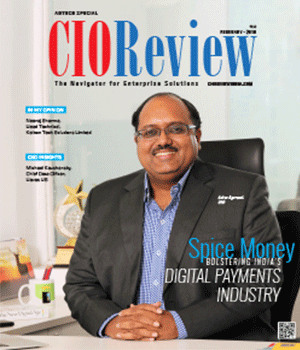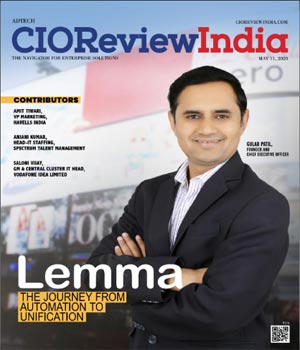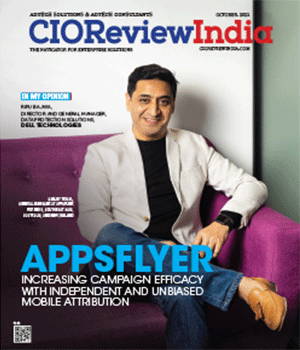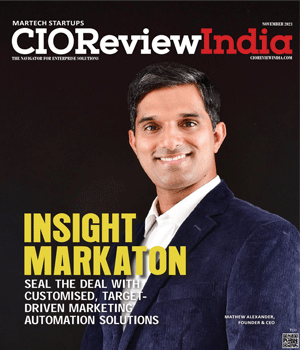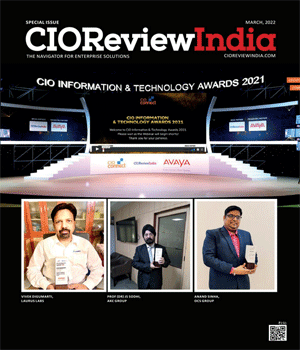
Transforming Investment Management Through Digitalization
Suvrata Acharya, SVP Vertical Delivery Head at NIIT Technologies | Wednesday, 18 September 2019, 05:41 IST
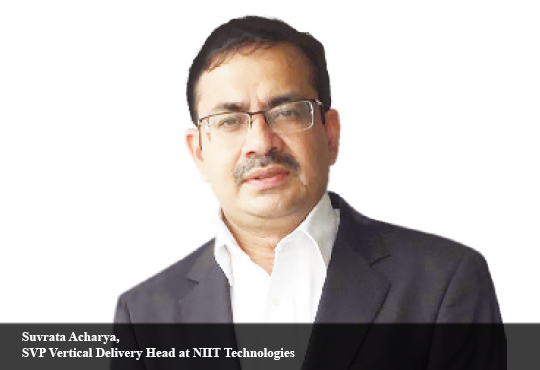 Mutual fund industry has shown a rapid growth in the recent years, mostly due to the rise of middleclass population and the changing mind set of people towards investment. Traditionally, people in India show more trust in Banks to safeguard their savings and invest in instruments like fixed deposits and government bonds. In recent years, people are moving towards investing in riskier assets like stocks and mutual funds for a better return on their savings. There is still a substantial liquidity lying in retail banks that can be invested in capital markets. The current challenge is to create a business model to nudge the people to invest in capital markets.
Mutual fund industry has shown a rapid growth in the recent years, mostly due to the rise of middleclass population and the changing mind set of people towards investment. Traditionally, people in India show more trust in Banks to safeguard their savings and invest in instruments like fixed deposits and government bonds. In recent years, people are moving towards investing in riskier assets like stocks and mutual funds for a better return on their savings. There is still a substantial liquidity lying in retail banks that can be invested in capital markets. The current challenge is to create a business model to nudge the people to invest in capital markets.
In developed countries like the USA and western Europe, there is a matured financial advisory model to assist investors in managing their investment goals. This has helped in getting a bigger percentage of the wealth coming in from capital market rather than from banks. So far in India, it is still not a financially viable model. Overall asset under management (AUM) is still smaller in comparison to the developed countries. But, this brings in opportunities for fintech players to build a more cost-effective advisory model through digitalization of investment management process. We have seen a massive growth in the digital wallet as they have simplified the payment process for the consumers. Few leading players have already started expanding their model to offer mutual fund distribution. But, still, there are multiple challenges that need to be addressed to attract investors.
“Digitalization brings a lot of opportunities for start-ups in India. In financial services industry, the current focus of startups is primarily on personal finance management and payment process”
Focusing on mass-affluent Middle Class
Today, seventy-five percent of the Indian market consists of either corporate or high net worth investors. The retail customer segment is small in the absence of any suitable mechanism to penetrate this market. There are immediate opportunities which can focus on the mass-affluent population which is growing due to a number of economic factors. These people are digitally savvy and highly ambitious. Their life’s goals are diversified, and they want their financial goals to be aligned accordingly. The first step to penetrate this market is to identify the target customers and build a service model. This can be done by integrating data from multiple social channels and developing a unique business model for this segment.
Investor Journey Mapping
Today, there is no effective process to capture the life’s goal of an investor and map these to investment goals effectively. Most of the financial firms who deal with retail investors are doing it as a one-time exercise when they start engaging a potential investor. There are no adequate efforts being made to create proper awareness and build confidence. New AI-based technologies such as NLP and chatbots are bringing up opportunities to develop better client engagement experience. By adopting these technologies, the firms can engage the customers to educate and capture their goals effectively. This process can bring more transparency between firms and investors.
Product Aggregation
There are a number of structured and unstructured financial products available in the market today. Regulators like RBI and SEBI are making structural changes in the market to allow more innovations in the capital market. Today, retail investors are mostly dependent on the recommendations from banks and brokers to choose the suitable products. These institutions are often biased towards the products that give better commission. So, investors cannot completely trust their recommendation and hence often delay their decision. One way it can be addressed is by bringing more transparency on the products and providing a proper comparison between the related products. Similar business model has transformed various industries like insurance, travel, and hospitality. Few known examples are Policy-Bazaar, Uber, and Airbnb. A similar aggregating system can be designed, keeping in mind the goals of the investors and assistance to take faster decision.
Developing a new client service interface
Digital client interfaces are becoming a norm as more and more people are preferring services through smart devices. Devices like Alexa and Google Homes are also penetrating the consumer market at a faster pace. Today, most of the investment management firms are using paper-based or PDFs to provide the investment statements. The statements only reflect the current value of the investments and fail to provide guidance and transparency. Customers are keen to have a better insight into the performance of their investments against their life’s goals. Moreover, every customer has a unique need and they look forward to the fulfillment of those needs through these investments. They also want flexibility to match life’s uncertainties and hence the need to change their present investments. An intuitive client engagement interface can be builtusing analytics and BI technologies which can transform the over-all client service model. An investor should be able to manage their goals, track their investments and get their queries addressed through these interfaces. Moreover, they can get the frictionless service on their own devices.
Digitalization brings a lot of opportunities for start-ups in India. In the financial services industry, the current focus of startups is primarily on personal finance management and payment process. They can certainly play an important role in transforming the investment management business model by bringing in suitable digital solutions to en-gage investors effectively.
CIO Viewpoint
Marketing Tech - A CIO Perspective
By Satish Panchapakesan, Senior Vice President & CIO, Arvind Fashions
Blockchain Based Cybersecurity For IoT
By Arunmani Subramanian, VP - Emerging Technologies, YASH Technologies
Data Science & Machine Learning In Fintech
By Jainendra Kumar, Head - Global Delivery Center-India & Senior Director Product Development Software, Diebold NixDorf
CXO Insights
Cyber Security - A Perspective
By Manu Sharma, Director - Information Technology And Corporate Security, OnMobile Global Limited
How Low-Code Is Transforming The Future Of Work...
By Deepak Pargaonkar, VP - Solution Engineering, Salesforce
Incorporating Blockchain Capabilities into...


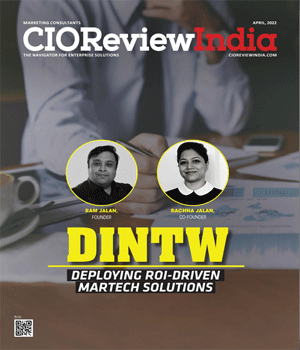
.jpg)
